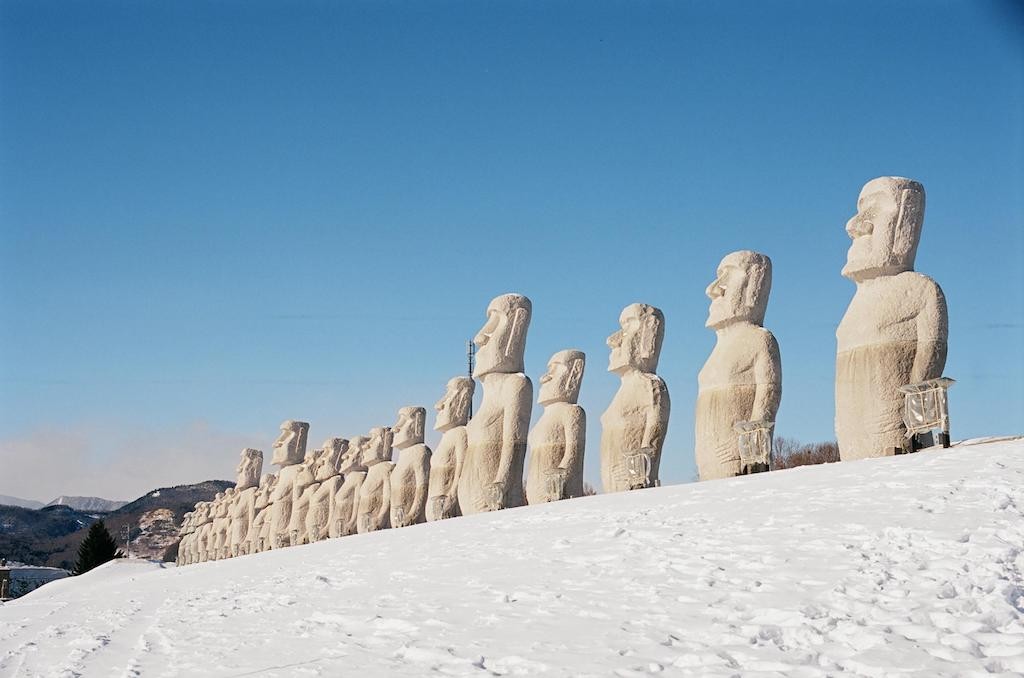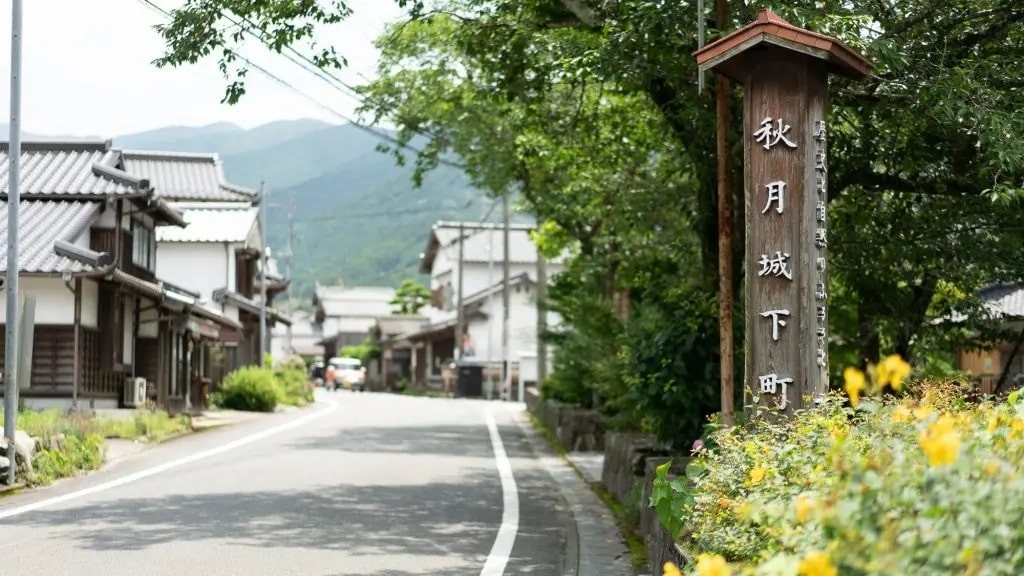5 Most Fascinating Spots To Visit In Fukushima For A Spring Vacation
Fukushima is the capital city of Fukushima Prefecture, Japan. It is located in the northern part of the Nakadōri, the central region of the prefecture. As of 1 May 2021, the city has an estimated population of 283,742 in 122,130 households and a population density of 370 inhabitants per square kilometre (960/sq mi). The total area of the city is 767.72 square kilometres (296.42 sq mi). The present-day city of Fukushima partially consists of most of the former Shinobu and Date Districts and a portion of the former Adachi District. The city is located in the Fukushima Basin's southwest area and nearby mountains.
Fukushima is a prefecture located in the Tohoku region of Japan, that is so much bigger than just ‘that place’. The third-largest prefecture of Japan has so much to offer due to the considerable effort of local people. You can see historical sites, breathtaking natural landscapes and taste the delicious local foods in Fukushima.
Top 5 Most Fascinating Spots To Visit In Fukushima
1. Miharu Takizakura
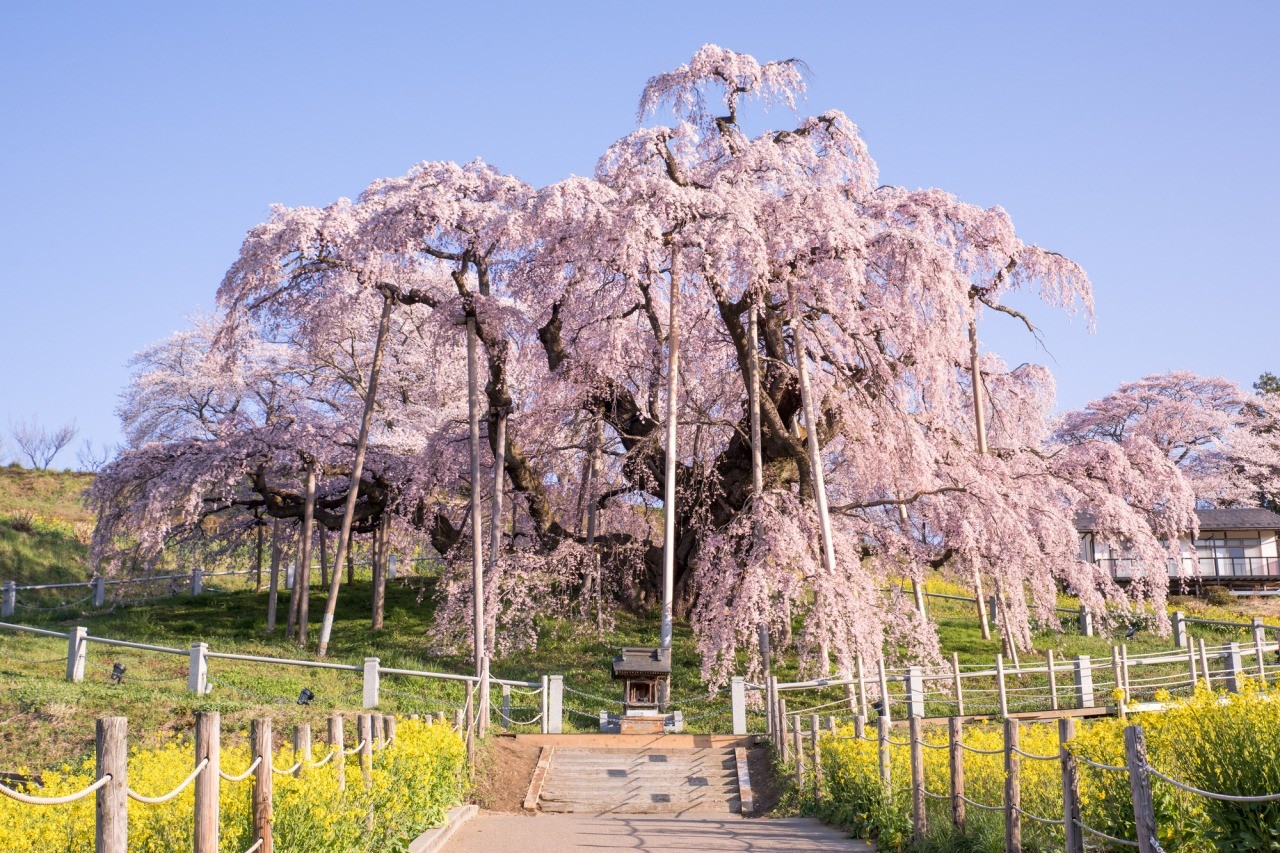 |
| Photo: www.tohokukanko.jp |
Miharu is a small town in central Fukushima Prefecture. The town’s name means “three springs” and it is easy to see how it got such a name. With cherry, plum, and peach trees blossoming in spectacular displays every spring, it is almost as if spring has tripled! But the most famous of the trees in Miharu is the Miharu Takizakura tree, which is a nationally-recognized Natural Monument.
Over ten centuries old, the beautiful Miharu Takizakura is a flowering cherry tree that spreads out in all directions and makes for a breathtaking vista. The cascading blankets of blossoms are how this tree got the name takizakura, or “waterfall cherry tree.” It is even one of the “three great cherry trees” of Japan (along with Usuzumizakura in Gifu and the Jindaizakura in Yamanashi Prefecture).
Miharu Takizakura sits in a sakura hollow in order to protect it from the elements while providing excellent drainage. The heavy boughs of the tree are supported by wooden beams and lend to its elegant form. The Miharu Takizakura begins blooming from mid-April. During the day the sight is whimsical, but visit in the evening and you’ll be treated to an almost haunting beauty as the tree is illuminated, according to Fukushima Travel.
2. Ouchi-juku
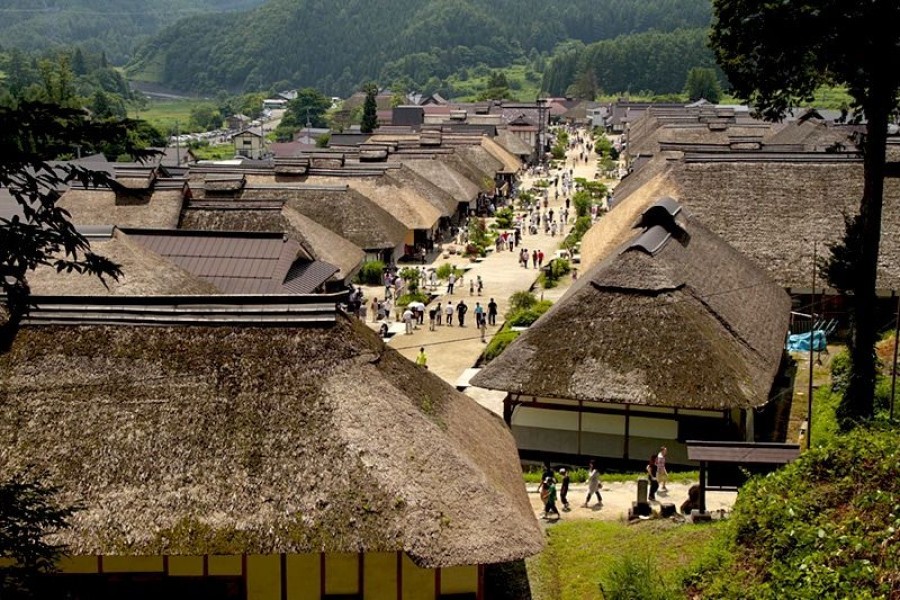 |
| Photo: Fukushima Travel |
Ouchijuku (大内宿, Ōuchijuku) is a former post town along the Aizu-Nishi Kaido trade route, which connected Aizu with Nikko during the Edo Period. Restrictions set by the shogunate required travelers to make their long journeys on foot and as a result, post towns developed along the routes to provide travelers with food, accommodations, and rest.
Today, Ouchijuku has been restored to look as it did in the Edo Period with telephone and electricity wires buried. The unpaved main street is lined by thick thatched roof buildings, which house a variety of shops, restaurants, and minshuku (small traditional Japanese inns). Soba noodles and locally caught char fish roasted on sticks are popular specialties.
Ouchijuku's former Honjin, the principle inn for high-ranked government officials, is also located along the main street and open to the public as a museum. It offers visitors an example of an elegant, traditional housing interior of the Edo Period and includes a collection of dishes, clothing, and other artifacts.
Also of note are Ouchijuku's shrine and temple. The temple is located at the end of the main street up a steep set of stairs. Visitors are rewarded with a panoramic view of the main street and its surroundings. A five-minute walk off the main road stands a quiet shrine, set back in a patch of cedar trees. Its pleasant atmosphere and unique purification fountain make for a nice visit, according to Japan Guide.
3. Hanamiyama Park
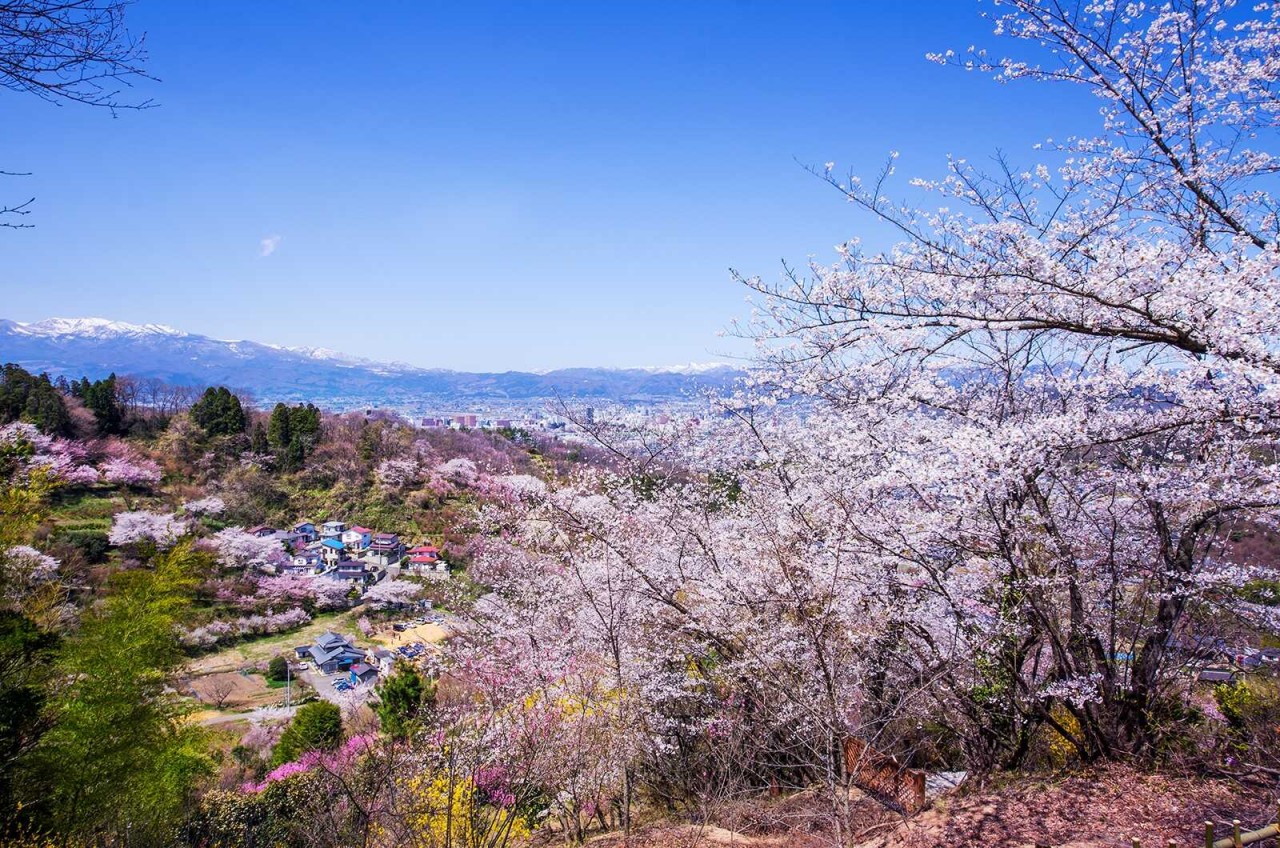 |
| Photo: Japan Web Magazine |
Hanamiyama Park is a privately-owned field for flowering and ornamental trees, in southeast Fukushima City. The park is located within a satoyama-type landscape i.e. managed woodland hill country close to human habitat. What originally began more than 60 years ago with local farmers planting flowers and trees, has grown into a beautiful scene. The landowner generously turned the area into a park in 1959 to allow visitors to enjoy the beautiful flowers there. Hanamiyama Park, and the wider Hanamiyama area, are now visited by thousands of admirers every year!
Springtime visits see cherry, plum, and forsythia trees paint everything in vivid colors. A gentle pink and purple landscape waving in the breeze with the picturesque snow-capped Azuma Mountains in the distance makes for an amazing sight. The riot of spring colors is spectacular enough to merit calling this park Fukushima's very own paradise. The flowering landscape moves all who see it and has been preserved through the cooperation of the local residents.
Enjoy a leisurely one-hour stroll that will take you from the foot of the hill to the summit. Travel through groves of flowering trees and other vibrant flowers in full bloom. Hanamiyama is the perfect getaway for a day for nature lovers, hikers, or people trying to escape for a short time. The best part is that spring isn’t the only beautiful time to visit. Marvel in wonder during the lush green summer foliage or the dappled colors of autumn.
4. Tsuruga Castle
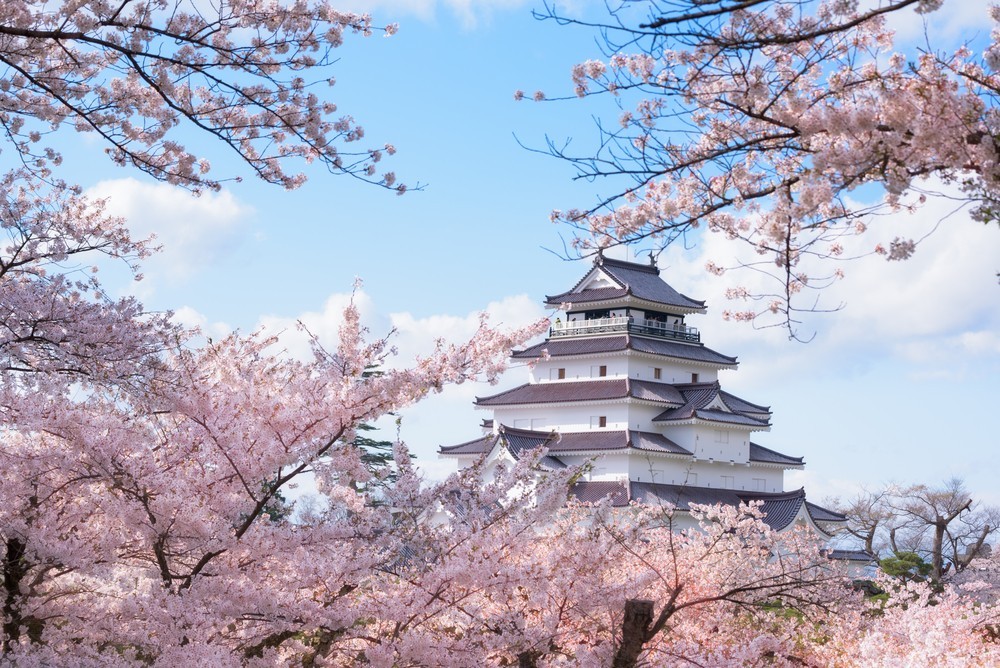 |
| Photo: FUN! JAPAN |
Tsuruga Castle (鶴ヶ城, Tsurugajō) was built in 1384 and changed hands many times between the different rulers of the Aizu region. It was destroyed after the Boshin War of 1868, a rebellion against the newly formed Meiji government, which had taken over control from the Tokugawa shogun and put an end to Japan's feudal era. Tsuruga Castle was one of the last strongholds of samurai loyal to the shogunate.
The castle was rebuilt as a concrete reconstruction in the 1960s. In renovation works completed in 2011, the color of the roof tiles was reverted from grey to the original red, a unique color among Japanese castles. Visitors can climb to the top floor of the castle keep and look out onto the surrounding city. The inside of the building is an interesting museum with attractive displays about the history of the castle and the samurai lifestyle.
Tsuruga Castle is surrounded by Tsuruga Castle Park, which is rather impressive. The park has well-tended lawns and cherry trees, which are particularly attractive when they are in bloom around mid-April. The surrounding moat and stone walls, which previously served defensive purposes, now contribute to the pleasant atmosphere of the park, according to Japan Guide.
5. Aizu-Wakamatsu
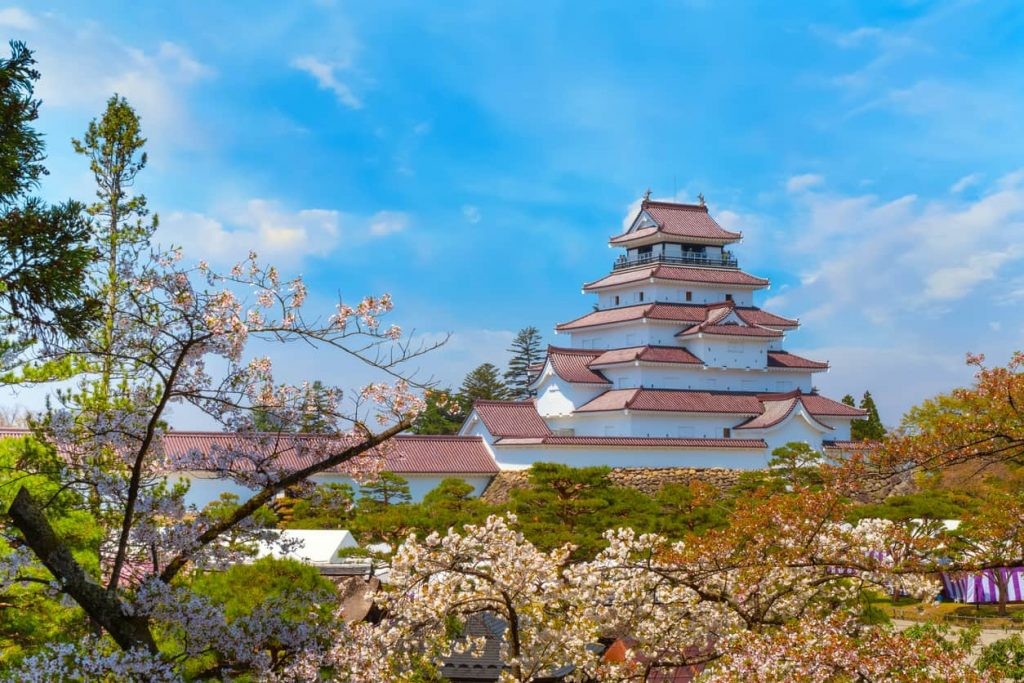 |
| Photo: GaijinPot Travel |
Aizu-Wakamatsu is a famous samurai town, surrounded by mountains. The city is known for its many historical highlights, including the Tsuruga Castle, the iconic castle that is also known as one of the best sakura spots in the area. The city officially calls itself Samurai city because of its history and there are more historical spots and traditional buildings, like the reconstructed samurai residence Aizu Bukeyashiki. If you are strongly interested in Japanese history, we recommend you some time in the city.
A recommended visit is Mt. Iimoriyama home to the interesting architectural highlight Sazaedo Temple. From the outside, it doesn’t look all too special, but when you visit the interior, you’ll realize there are two spiral ramp-like staircases. As one is used to going up and one to going down, you will never come across someone who’s walking down. Located also on the Iimoriyama Hill, a few minutes south of the temple on foot, you can visit the burial ground of 19 young samurai who committed suicide (seppuku) after they saw their beloved Tsuruga Castle engulfed in flames and thought they has lost the Boshin war. The tragedy is that they were wrong, the castle wasn’t at fire at that time, but the story of their loyalty and devotion has become well known. Besides the long history and the beautiful buildings, Aizu-Wakamatsu is known for its high-quality sake, traditional crafts, onsen, and scenic train rides.
 | Japan Supports Vietnamese Children Against Climate Change The Japanese Government will provide US$5.7 million funding to equip Vietnamese children, families and communities in the Central region and the Mekong Delta with necessary ... |
 | Returning Vietnamese Migrant Workers in 3 Provinces Received Support The youth-led initiatives help provide the young returning migrant workers with job replacement, income generation, life skills and sexual and reproductive health knowledge |
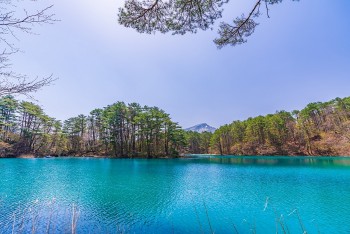 | Discover The Beautiful And Mysterious “Five-Coloured Ponds” In Japan Somewhere in Japan, there is a beautiful and mysterious place called Goshiki-numa, a cluster of five volcanic lakes, which their incredible colours of water and ... |
Recommended
 Travel
Travel
Vietnam Through Australian Eyes: Land of Flavor, Warmth, and Timeless Charm
 Travel
Travel
Strategies for Sustainable Growth of Vietnam’s Tourism from International Markets
 Travel
Travel
Vietnam Strengthens Its Presence On The Global Tourism Map
 Multimedia
Multimedia
Phong Nha-Ke Bang National Park Named Top Adventure Travel Site
Popular article
 Travel
Travel
Vietnam Welcomes Record-High Number of International Visitors
 Travel
Travel
Luxury Train From Hanoi To Hai Phong To Be Launched In May
 Travel
Travel
Phong Nha Named Top Budget-Friendly Travel Destination for Spring 2025: Agoda
 Travel
Travel





